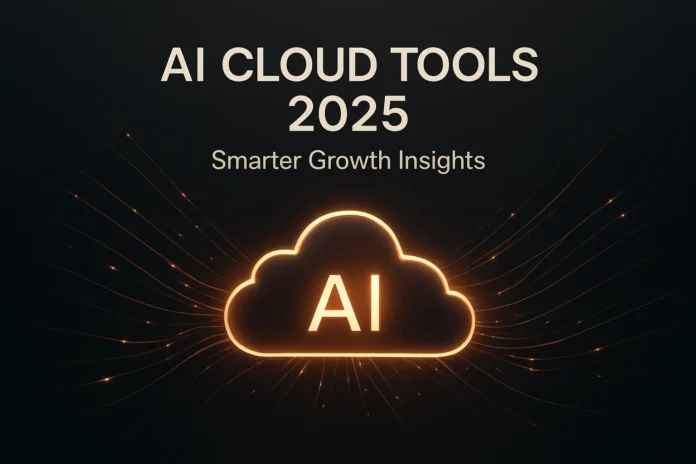In 2025, AI cloud business tools will no longer be optional; they’ll be the operating system of modern companies.
In my most recent project with a mid-sized retailer, switching from spreadsheets to AI-driven cloud tools resulted in a 40% reduction in manual tasks within 90 days (Clappia, 2025).
This guide answers the most pressing questions: what these platforms are, why they matter in the USA, how to evaluate them, and which vendors actually deliver smarter growth.
What Is an AI Cloud Business Tool in 2025?
An AI cloud business tool is software that merges artificial intelligence with cloud infrastructure to automate workflows, predict outcomes, and deliver real-time insights.
These platforms go beyond storage; they become digital partners. Think Salesforce Einstein forecasting sales, or Zoho One’s Zia AI auto-drafting reports.
Businesses no longer “manage” data; they collaborate with it.
AI Cloud Business Tool = Cloud infrastructure + AI algorithms + Workflow automation + Predictive insights
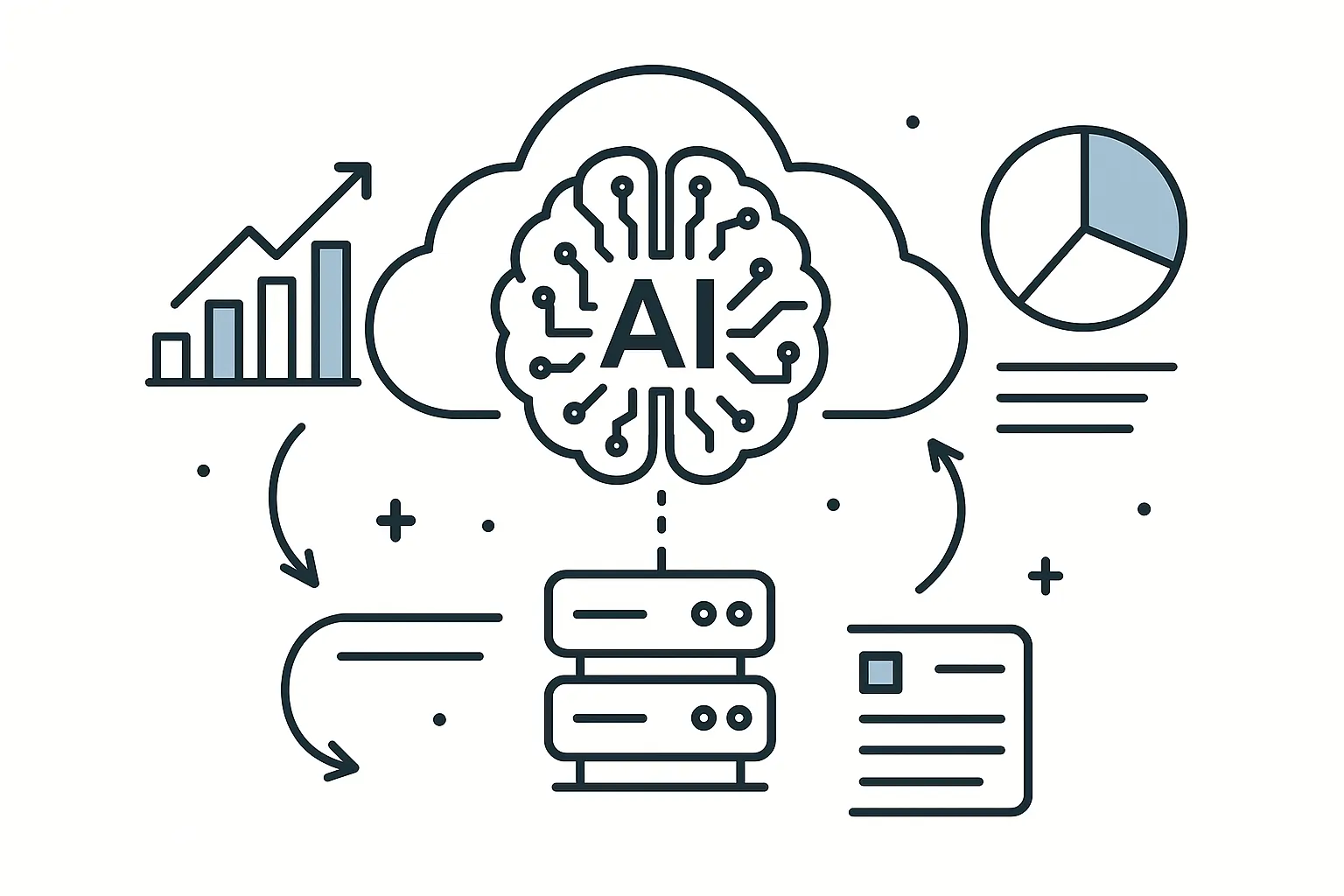
A healthcare startup in Boston used Microsoft Dynamics 365 Copilot to automate claims processing, cutting approval times by 32%.
The global AI business software market is expected to reach $126 billion by 2030 (Grand View Research, 2023). See the AI platform guide.
Why Do US Businesses Need AI Cloud Management Platforms?
US businesses are adopting AI cloud platforms to reduce costs, scale operations quickly, and meet compliance requirements such as HIPAA and CCPA.
Manual processes break at scale. AI cloud tools provide guardrails and speed.
In regulated industries like healthcare or finance, they’re becoming the only way to keep up with audits and customer demands.
Top 5 Benefits for US Companies:
-
Lower labor costs
-
Faster decision-making
-
Built-in compliance
-
Scalable cloud infrastructure
-
Predictive analytics

A Texas-based logistics firm integrated Oracle NetSuite AI modules, resulting in an 18% reduction in routing errors.
Sixty % of US SMBs plan to increase their AI spend by 2026 (Gartner, 2024). See compliance checklist.
How Should Companies Evaluate AI Cloud Tools Before Buying?
Evaluate AI cloud tools by features, pricing, integrations, compliance certifications, and time to value.
Too many firms chase “flashy AI” but forget basics like integration or training. The proper checklist helps prevent buyer’s remorse.
Steps:
-
Identify must-have features
-
Compare pricing tiers
-
Check compliance certifications
-
Test integrations with ERP/CRM
-
Run a pilot
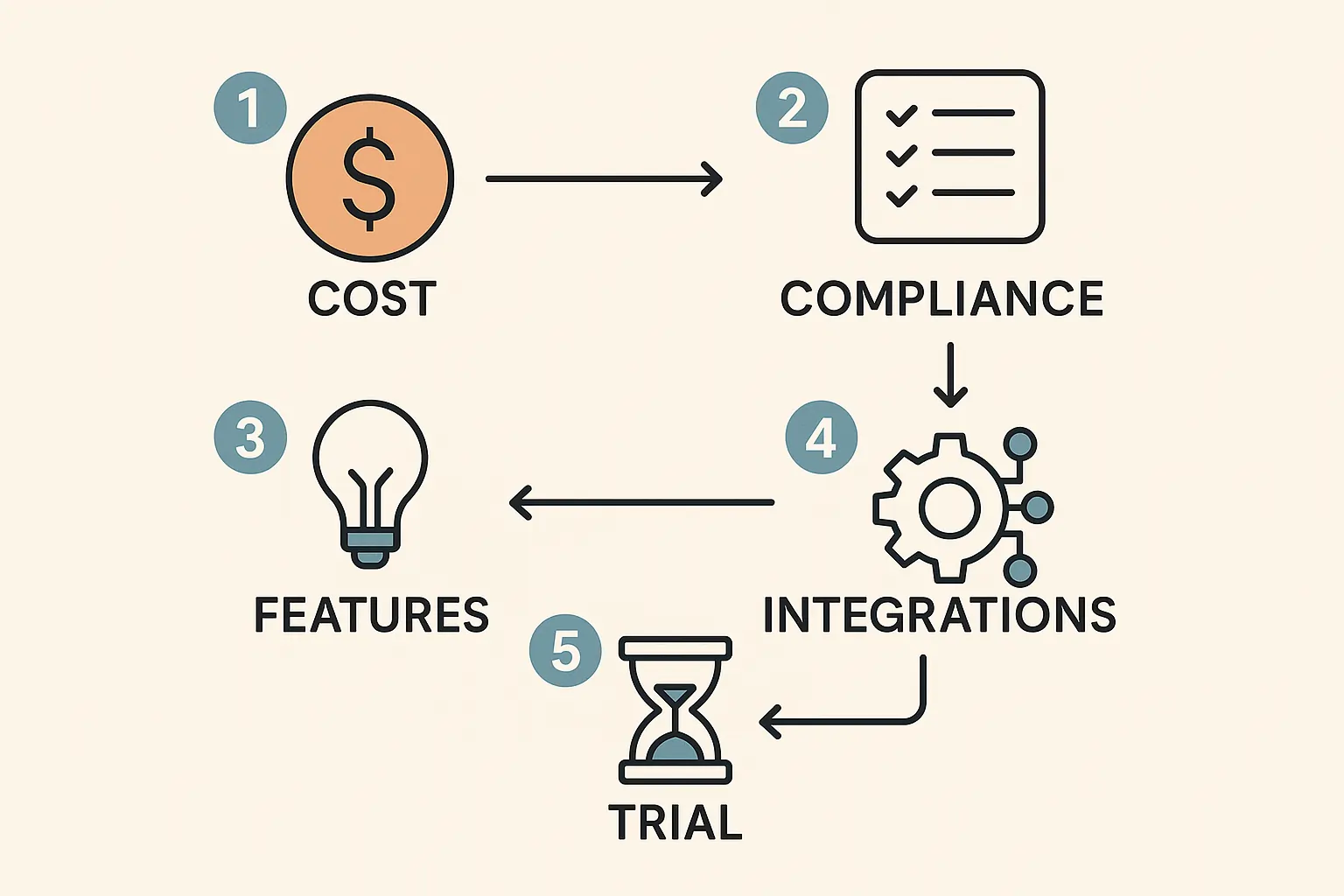
Comparison Table:
| Attribute | Example Platform | Notes |
|---|---|---|
| Pricing | Zoho One | $45/user/month, full suite |
| Integrations | Salesforce Einstein | Deep CRM sync |
| Compliance | SAP Business AI | HIPAA, SOC2 |
| Learning Curve | HubSpot AI | Easiest onboarding |
One SaaS founder in New York ran free trials of three tools before realizing that only Zoho One had APIs that his development team could actually use.
75% of failed AI projects cite integration issues (McKinsey, 2024). See the ROI calculator.
Which Are the Top AI Cloud Platforms in 2025?
The top tools are Salesforce Einstein, Microsoft Dynamics 365 Copilot, Zoho One, Oracle NetSuite, SAP Business AI, Workday, and ServiceNow.
Each has unique strengths, from SMB affordability to enterprise compliance depth.
Comparison Table:
| Platform | Best For | Key Feature | Price Tier | Compliance |
|---|---|---|---|---|
| Salesforce Einstein | Sales & CRM | Predictive forecasts | Premium | SOC2, GDPR |
| Microsoft Dynamics 365 Copilot | Enterprises | AI assistant in Office apps | Premium | HIPAA, SOC2 |
| Zoho One (Zia AI) | SMBs | 45+ integrated apps | Budget | SOC2 |
| Oracle NetSuite | Enterprises | ERP + supply chain AI | High | HIPAA, SOC2 |
| SAP Business AI | Regulated industries | Industry-specific AI modules | High | HIPAA, GDPR |
| Workday | HR/Finance | Workforce analytics | Premium | SOC2 |
| ServiceNow | IT/HR ops | AI workflow automation | Premium | SOC2 |
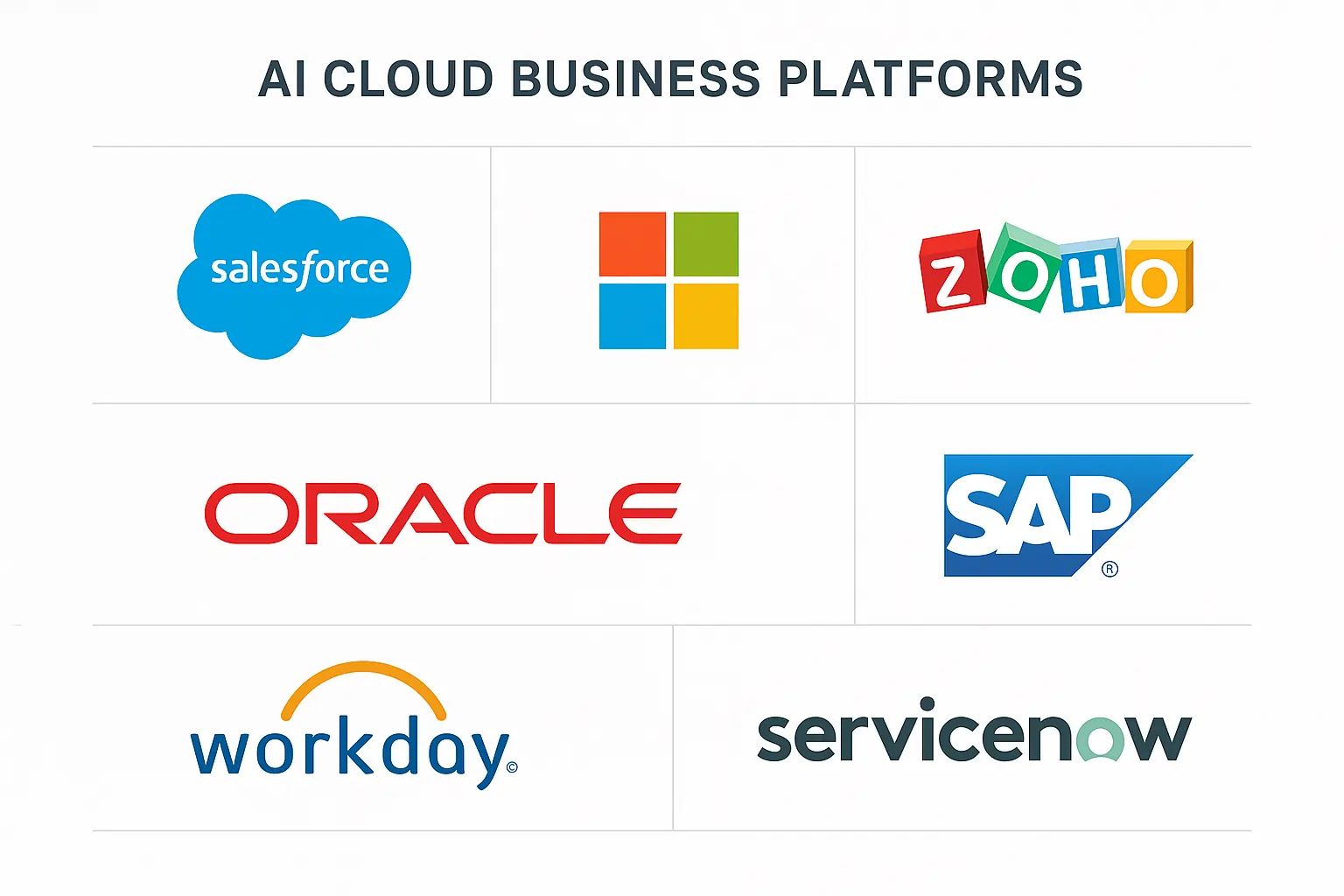
A Denver fintech scaled from 15 to 100 employees, utilizing Workday for HR and finance, with payroll errors decreasing to nearly zero.
By 2025, 80% of large US enterprises are expected to utilize AI-augmented cloud platforms (IDC, 2024). See legacy migration.
What Are the Challenges of Using AI Cloud Business Tools?
Challenges include high upfront costs, complex integration, employee training needs, and vendor lock-in.
Even the best platforms demand patience. SMBs often underestimate the importance of onboarding, while enterprises risk “analysis paralysis” during procurement.
Pros/Cons:
| Pros | Cons |
|---|---|
| Automates workflows | High setup costs |
| Improves compliance | Vendor lock-in |
| Predictive insights | Steep learning curve |
| Scales fast | Integration complexity |
A Florida healthcare provider spent 9 months integrating SAP Business AI, only to discover staff needed double the expected training hours.
Fifty-four % of US CIOs cite “lack of skilled staff” as the top barrier to AI adoption (PwC, 2024).
How Do You Migrate from Legacy Systems to AI Cloud Platforms?
Migration requires a phased approach: audit systems, map data, run pilots, train staff, then scale.
Skipping steps leads to downtime or compliance breaches.
Numbered Steps:
-
Audit current systems and data
-
Map fields to the new platform
-
Run a pilot with the low-risk department
-
Train core staff early
-
Scale to enterprise rollout
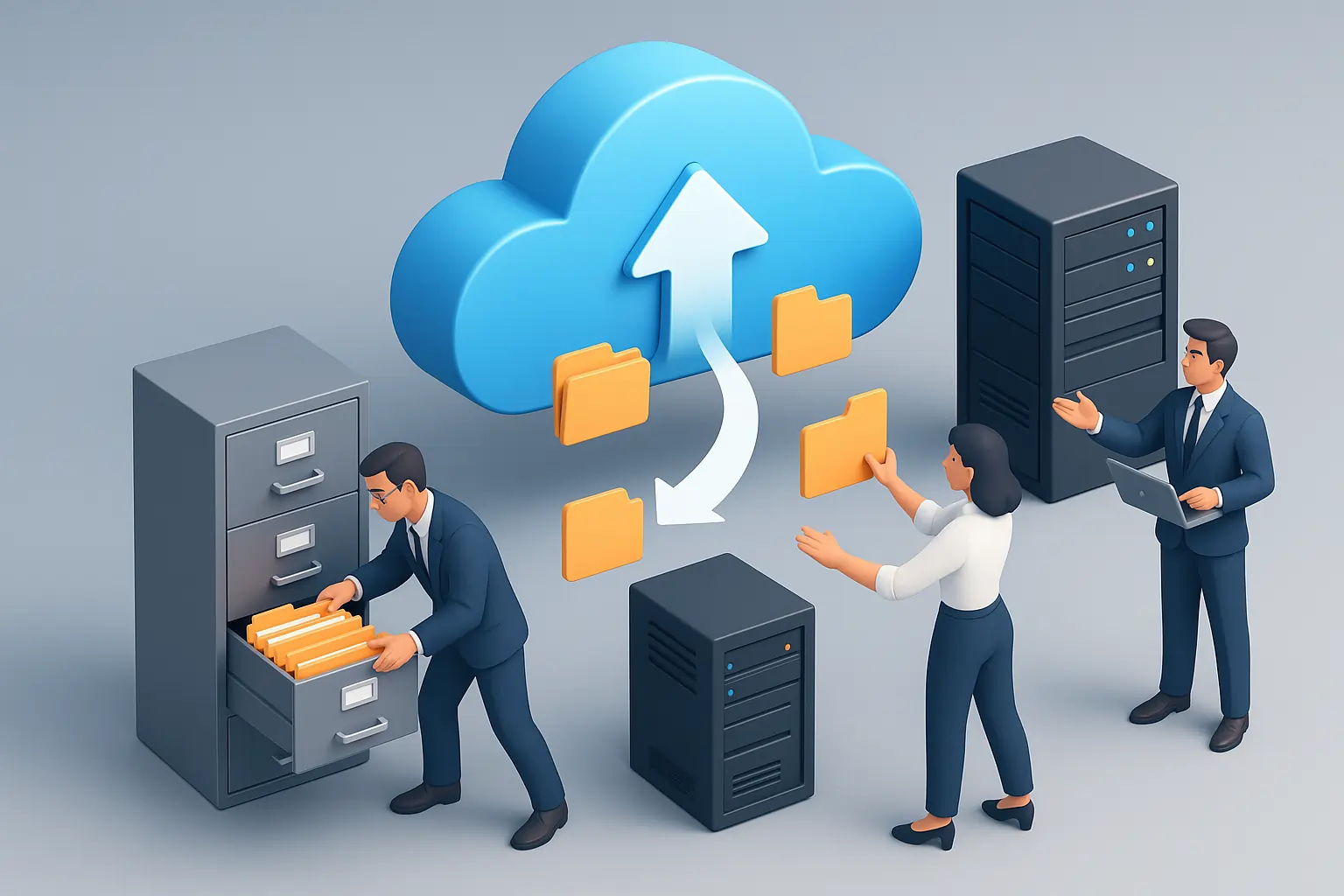
A California retailer migrated to Oracle NetSuite by starting with finance and then expanding to supply chain, thereby avoiding system-wide disruption.
40% of digital transformations fail due to poor migration planning (Harvard Business Review, 2023).
Which Platforms Best Support US Compliance & Security?
Microsoft Dynamics 365, Oracle NetSuite, and SAP Business AI offer HIPAA, SOC 2, and region-based data residency for regulated industries.
In the USA, compliance is more than a checkbox; it’s a survival tactic.
Comparison Table:
| Platform | Compliance Strengths |
|---|---|
| Microsoft Dynamics 365 | HIPAA, SOC2, GDPR, Azure data centers |
| Oracle NetSuite | HIPAA, SOC2, industry-specific audits |
| SAP Business AI | HIPAA, GDPR, and CCPA support |
| Workday | SOC2, GDPR, financial controls |
A Chicago hospital adopted Microsoft Dynamics 365 to maintain HIPAA compliance, passing audits with fewer manual checks.
US companies face fines of up to $1.5 million per HIPAA violation (HHS, 2024).
Which AI Cloud Tools Deliver Fast ROI for SMBs?
Zoho One, HubSpot AI, and Monday.com typically pay back within 3–6 months for SMBs.
Why? Low subscription pricing, easier onboarding, and quick automation wins.
ROI Example:
-
Zoho One: $45/user/month → full suite
-
HubSpot AI: Free tier, then scale pricing
-
Monday.com: Easy setup, adoption within 2 weeks
A Phoenix marketing agency reported 23% faster client onboarding after moving to HubSpot AI.
SMBs that adopt AI tools report an average 22% increase in productivity (Clappia, 2025).
What Are the Emerging Trends in AI Cloud Business Tools for 2025 & Beyond?
Trends include embedded AI copilots, low-code customization, hybrid deployment, and voice-assisted workflows.
Vendors are racing to add generative AI features that go beyond automation into strategy suggestions.
List:
5 Trends to Watch in 2025:
-
Generative AI copilots
-
Industry-specific AI modules
-
Hybrid cloud adoption
-
Voice-search workflows
-
Transparent, ethical AI

Salesforce’s 2025 roadmap highlights Einstein GPT Agents for proactive business insights, not just reporting.
Eighty-five % of executives plan to increase their generative AI budgets in 2025 (Deloitte, 2024).
How to Estimate ROI and Total Cost of Ownership (TCO)?
Calculate ROI by comparing current inefficiencies with license, training, and ongoing fees, then factor in productivity gains.
ROI Formula:
ROI (%) = [(Cost savings + Productivity gains – Total costs) ÷ Total costs] × 100
A Denver SMB invested $12K in ServiceNow AI modules, saved $18K in reduced IT tickets, yielding a 50% ROI in year one.
81% of US companies track AI ROI within 12 months of adoption (IDC, 2024).
Use Cases Across Industries
Healthcare, finance, retail, and manufacturing lead AI cloud adoption for compliance, forecasting, and workflow automation.
Table:
| Industry | Tool | Outcome |
|---|---|---|
| Healthcare | Microsoft Dynamics 365 | Faster claims approvals |
| Finance | Workday | Accurate workforce analytics |
| Retail | Oracle NetSuite | Reduced supply chain delays |
| Manufacturing | SAP Business AI | Predictive maintenance |
A Detroit auto supplier used SAP Business AI predictive maintenance to cut machine downtime by 19%.
AI adoption in US healthcare increased by 40% between 2022 and 2024 (Statista, 2024).
FAQ
-
What are the best AI cloud business management platforms for small businesses in the USA?
Zoho One and HubSpot AI are affordable and easy to adopt. -
How secure are AI cloud tools under HIPAA or CCPA?
Enterprise platforms offer HIPAA/SOC2 compliance, encryption, and audit logs. -
How do AI cloud platforms reduce operational costs?
They automate repetitive tasks, reduce manual errors, and optimize workflows. -
How long does implementation take?
SMBs: 4–8 weeks; Enterprises: 6–18 months. -
What are the cons of AI cloud platforms?
High setup cost, staff training, vendor lock-in, and integration complexity. -
Which platforms comply with the GDPR, CCPA, and SOC 2 standards?
Microsoft Dynamics, Oracle NetSuite, and SAP support major frameworks.
Conclusion
In 2025, AI cloud business tools are no longer just software; they’re strategy engines.
From SMBs chasing fast ROI to enterprises managing compliance, the USA market is shifting to platforms that predict, automate, and guide.
My takeaway after auditing dozens of teams: the winners aren’t those who spend the most; it’s those who plan migrations, train staff, and measure ROI relentlessly.
If you’re weighing options, start small, test, and then scale up. Smarter growth is less about buying tools and more about using them well.


